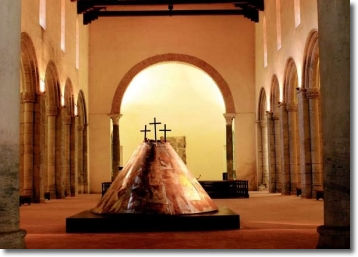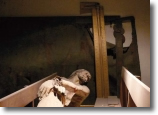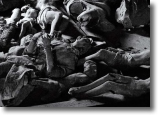
The most famous Basilica of ancient Naples, after the Cathedral Stefania... [is] recognized with the name of St. Gennaro. It is preceded by a little vestibule and an atrium; in the first you can see some fresco painting, denoting the feats of St. Gennaro, beautiful work of the School of Sabatino, but now are reduced to such a state that just see them with disgust; they deserve to be jealously guarded but, for Heaven's sake, don't restore it. The church holds the beautiful old italo-greek forms.
The early christian basilica was erected in the fifth century near the Catacombs of St. Gennaro. When the Saint's body was transferred to Benevento for the will of the Duke Sicone (817-832), the church was neglected. It remained so until 872, when full extensions works were made and was built the monastery dedicated to the saints Gennaro and Agrippino.
In the fifteenth century the complex was once again restructured, at the same time of the construction of a hospital for plague victims, built by the Cardinal Oliviero Carafa where was the monastery. To pave the Basilica were used the gravestones removed from adjacent Catacomb (which in large part, during the subsequent further restorations are lost).
In 1669 the viceroy Pietro Antonio D'Aragona transformed the hospital into a hospice for the poor. Between 1927 and 1932 a restoration deleted the stratifications and gave to the structure its original appearance. Many artworks of the basilica are exposed now in the Civic Museum of Castel Nuovo.


